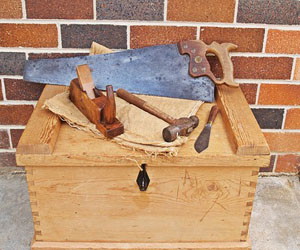


The Power Of Hands-On Expression
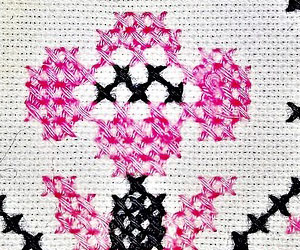
In a world dominated by mass production and standardized consumer goods, the do-it-yourself (DIY) movement has emerged as a powerful and liberating force for creativity. DIY creativity encompasses a wide range of activities, from crafting and home improvement to electronics and homemade gifts. It empowers individuals to use their hands and imaginations to bring unique and personal projects to life. This article explores the importance of DIY creativity and how it can positively impact your life.
At its core, DIY creativity encourages self-expression. It allows individuals to break free from the constraints of pre-made products and to personalize their world. Whether you're sewing your own clothes, designing custom furniture, or creating unique artwork, DIY projects enable you to infuse your personality and style into every piece. This self-expression not only fosters a sense of ownership but also promotes a deeper connection to the things you make.
Engaging in DIY projects fosters a sense of accomplishment. There's an undeniable satisfaction in turning raw materials into a functional item or a work of art. Completing a DIY project instills a sense of pride and boosts self-esteem. It's a tangible reminder of your ability to create and innovate, which can be incredibly empowering.
Moreover, DIY creativity sparks problem-solving skills. Crafting your own solutions to challenges and hurdles in a project can be intellectually stimulating. It encourages critical thinking and resourcefulness as you seek to find the best way to achieve your vision. Whether it's figuring out how to fix a leaky faucet or designing a custom circuit board for a personal electronics project, DIY creativity demands a degree of innovation.
The DIY approach is cost-effective. Creating your own items or solving problems independently often saves money in the long run. Instead of purchasing expensive pre-made products or paying for professional services, DIY allows you to use your resources efficiently, relying on your skills and tools. It's a practical way to live sustainably while enjoying the process of creation.
DIY creativity also encourages a sense of community. Many individuals who engage in DIY projects find themselves participating in local crafting groups, makerspaces, or online forums where they can share ideas, gain inspiration, and collaborate with like-minded people. This sense of community fosters connections, friendships, and mentorships that enrich the overall experience of DIY creativity.
DIY creativity is more than just a hobby; it's a lifestyle that empowers individuals to express themselves, problem-solve, save money, and connect with others. It nurtures self-expression, fosters a sense of accomplishment, sharpens problem-solving skills, and promotes resourcefulness. Additionally, it enables people to take ownership of their surroundings and to live more sustainably. So, whether you're a seasoned DIY enthusiast or someone considering your first project, embrace the freedom and creativity that DIY offers. It's a pathway to a more fulfilling and innovative life where your hands are the tools for self-expression and personal empowerment.
Nurturing Nature And Your Garden
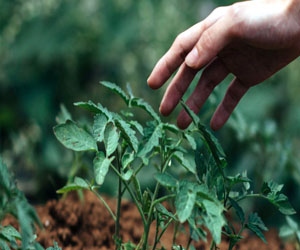 The Essence Of Sustainability In Herb Cultivation
The Essence Of Sustainability In Herb Cultivation
Sustainable herb cultivation involves growing herbs in a manner that minimizes environmental impact, conserves resources, and promotes long-term garden health. This approach takes into consideration the entire lifecycle of the garden, from planting and maintenance to harvest and beyond.
Sustainable Herb Cultivation Practices
Organic Gardening: The foundation of sustainability in herb cultivation is organic gardening. Avoid synthetic pesticides and fertilizers, opting instead for natural and organic alternatives. This practice ensures that your herbs are free from harmful chemicals.
Water Conservation: Use water wisely by installing efficient irrigation systems like drip hoses or soaker hoses. Collect rainwater for irrigation to reduce dependence on municipal water supplies.
Composting: Create your compost heap to recycle kitchen scraps and garden waste. Compost enriches the soil, reduces the need for synthetic fertilizers, and minimizes landfill waste.
Crop Rotation: Implement crop rotation techniques to prevent soil depletion and minimize the risk of herb-specific diseases. Rotating herbs within your garden beds maintains soil health and vitality.
Beneficial Insects: Attract and support beneficial insects like ladybugs, bees, and butterflies. These insects help with pollination and natural pest control in your herb garden.
Craftsmanship And Artistry In Clay
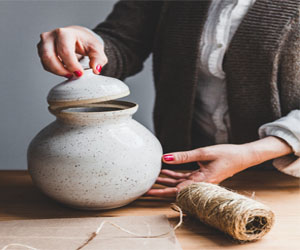 The Creative Process: The creation of handmade ceramics begins with selecting the right type of clay, which can range from earthenware to stoneware to porcelain, each offering unique characteristics and possibilities. Once the clay is chosen, it's hand-worked into the desired shape, whether a functional piece like a bowl or a purely decorative sculpture.
The Creative Process: The creation of handmade ceramics begins with selecting the right type of clay, which can range from earthenware to stoneware to porcelain, each offering unique characteristics and possibilities. Once the clay is chosen, it's hand-worked into the desired shape, whether a functional piece like a bowl or a purely decorative sculpture.
Artists often experiment with textures, patterns, and surface treatments to give their pieces a distinct character. They may carve, incise, or use various glazing and decorating techniques to achieve their artistic goals. Each piece reflects the artist's individual style and creative expression.
The Human Touch: What sets handmade ceramics apart is the human touch evident in every detail. These pieces bear the imperfections and idiosyncrasies that result from the artist's hands, making each item truly unique. The texture of the clay, the nuance of the glaze, and the individual characteristics of the artist's work contribute to the rich diversity of handmade ceramics.
Functional And Decorative Art: Handmade ceramics serve a dual purpose in both the realms of functional and decorative art. Many artists create pottery that is not only beautiful but also functional, such as mugs, plates, and vases. These pieces add a personal and artistic touch to everyday life, enhancing the aesthetic experience of daily rituals like enjoying a cup of coffee or arranging flowers.
On the other hand, decorative ceramics explore the boundaries of the medium and often serve as standalone art pieces. Sculptural and abstract in nature, they challenge conventional notions of pottery and ceramics, pushing the limits of what can be achieved with clay.
The Role Of The Artist: Handmade ceramics emphasize the role of the artist as a creator, with each piece reflecting their unique perspective, skill, and creativity.
Creativity, Skill, And Personal Fulfillment
 Limitless Creativity: Woodworking projects provide a platform for limitless creativity. From crafting custom furniture pieces that blend seamlessly with your home's decor to designing unique wooden sculptures that captivate the imagination, there are no boundaries when it comes to the artistic possibilities. Woodworkers have the privilege of transforming their ideas and visions into tangible forms, resulting in projects that reflect their own unique style and personality.
Limitless Creativity: Woodworking projects provide a platform for limitless creativity. From crafting custom furniture pieces that blend seamlessly with your home's decor to designing unique wooden sculptures that captivate the imagination, there are no boundaries when it comes to the artistic possibilities. Woodworkers have the privilege of transforming their ideas and visions into tangible forms, resulting in projects that reflect their own unique style and personality.
Practicality Meets Artistry: Woodworking is not solely about artistic expression. Many projects fuse practicality with artistry. Whether you're building a sturdy bookshelf, a functional workbench, or a custom kitchen cabinet, your creations are designed to enhance daily living while showcasing the craftsmanship behind the work. This blend of form and function adds depth to the world of woodworking projects, where utility meets aesthetics.
The Learning Curve: Woodworking projects encompass a wide spectrum of complexity, catering to beginners and experts alike. For those new to the craft, simple projects like wooden coasters or picture frames offer an excellent starting point. As you gain confidence and experience, you can gradually advance to more intricate endeavors, such as crafting intricate tables, intricate cabinetry, or ornate carvings. The learning curve is part of the appeal, encouraging woodworkers to expand their skills and knowledge.
A Sense Of Accomplishment: The completion of a woodworking project brings a profound sense of accomplishment. Watching a pile of lumber transform into a polished, finished product is a source of immense pride and satisfaction. Each project represents a personal achievement and a testament to the dedication and skill that went into its creation.

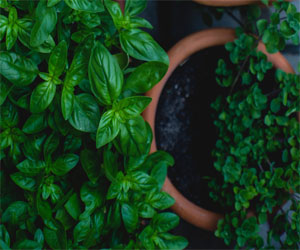
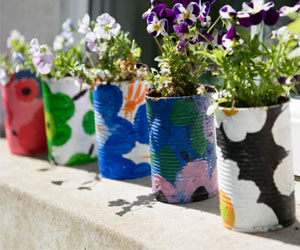
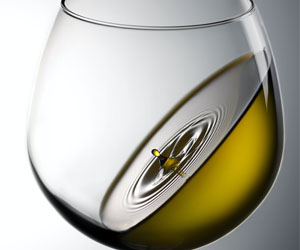
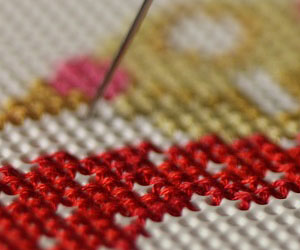

A Journey To Wellness And Vitality
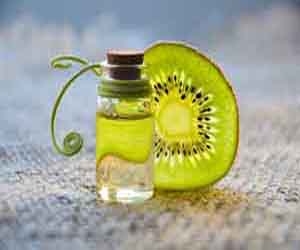 Plant-Based Healing: Plants are a rich source of healing properties. Aloe vera, for instance, has been used for centuries to treat burns and skin irritations. Turmeric is renowned for its anti-inflammatory and antioxidant properties. Ginkgo biloba is used to enhance memory and cognitive function.
Plant-Based Healing: Plants are a rich source of healing properties. Aloe vera, for instance, has been used for centuries to treat burns and skin irritations. Turmeric is renowned for its anti-inflammatory and antioxidant properties. Ginkgo biloba is used to enhance memory and cognitive function.
Herbal Elixirs: Herbal remedies often take the form of teas, tinctures, or infusions. Herbs like chamomile and lavender are known for their calming effects, while Echinacea is a popular choice for boosting the immune system.
Essential Oils: Essential oils are highly concentrated extracts from plants and are used in aromatherapy and topical applications. Lavender oil promotes relaxation and sleep, while tea tree oil has potent antimicrobial properties.
Healing Crystals And Minerals: Crystals like amethyst, rose quartz, and citrine are believed to possess healing energies. They are often used in energy work and meditation to restore balance and harmony.
Holistic Approach: The healing properties of natural elements are not limited to physical ailments.
A Journey Towards Health And Well-Being
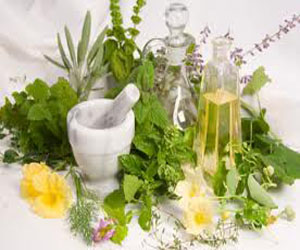 Safer Skincare: Personal care products, such as cosmetics and skincare items, are notorious for containing synthetic chemicals. Safer alternatives often come in the form of natural or organic products. These are made with ingredients sourced from nature, reducing the risk of skin irritation, allergies, or exposure to harmful substances.
Safer Skincare: Personal care products, such as cosmetics and skincare items, are notorious for containing synthetic chemicals. Safer alternatives often come in the form of natural or organic products. These are made with ingredients sourced from nature, reducing the risk of skin irritation, allergies, or exposure to harmful substances.
Chemical-Free Cleaning: Conventional household cleaning products often contain a mix of harsh chemicals, many of which can be harmful to both human health and the environment. Safer alternatives include natural cleaning products, such as vinegar, baking soda, and plant-based cleaners, which effectively clean without the toxic residue.
Nutrition And Food Choices: Safer alternatives extend to our diet. Organic produce, for instance, reduces exposure to pesticides and synthetic additives. Opting for whole foods over processed ones is another way to embrace a healthier approach to nutrition.
Reducing Plastic: Plastic pollution is a significant environmental issue, and it can also have adverse health effects due to the presence of microplastics in our food and water. Safer alternatives include using reusable containers and reducing plastic usage to minimize exposure.
Natural Medicine: Traditional and alternative medicine systems, like Ayurveda and Traditional Chinese Medicine, often provide safer alternatives to pharmaceutical drugs. These natural remedies focus on holistic healing and have fewer side effects.
Eco-Friendly Choices: Safer alternatives often align with eco-conscious choices. Reusable items, like cloth shopping bags and stainless steel straws, not only reduce waste but also limit exposure to potentially harmful chemicals found in disposable plastics.